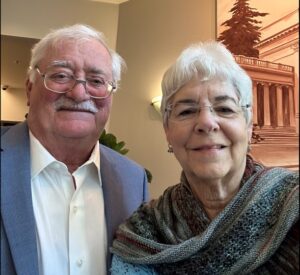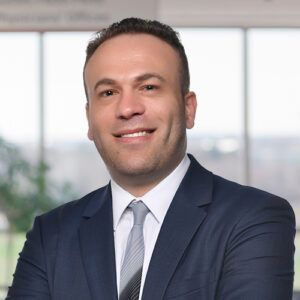A ‘big catch’ saved Marlo’s life
A routine appointment revealed she had a brain bleed.
In early 2023, Marlo Beeman noticed a strange problem with her right hand.
“It would go limp three times or four times a day,” says Beeman, who was also experiencing unusual headaches. “I couldn’t pick up anything, grasp a pen or write. That was, to me, so bizarre.”

Beeman suspected she had carpal tunnel syndrome. She shared her symptoms with hand and orthopedic surgeon Taruna Madhav Crawford, MD, CIME, of Riverside Medical Group, who had recently treated Beeman for another condition.
As she listened to Beeman describe her symptoms, Dr. Crawford’s radar went off. Beeman’s symptoms seemed less like carpal tunnel syndrome than a potential issue with her spine or her brain—perhaps even a mini-stroke or a lesion on the brain. After performing a neurologic exam, Dr. Crawford arranged for Beeman to undergo a diagnostic MRI scan that very day.
The scan revealed a subdural hematoma, an abnormal accumulation of blood between the surface of the brain and its protective covering. This blood, or a clot formed from it, can press on the brain, sometimes triggering symptoms like the hand weakness Beeman experienced. Undetected and untreated subdural hematomas can lead to worsening symptoms and, in rare cases, paralysis or even death.
Chronic subdural hematomas, like Beeman’s, often occur slowly after a mild head injury. About two months before her symptoms started, Beeman had accidentally walked headfirst into a glass door while leaving a restaurant. Her brain injury likely resulted from that minor trauma.

Dr. Crawford is humble about her role in diagnosing Beeman’s serious condition, though she acknowledges it was a “big catch.” Beeman puts it this way: “She saved my life.”
‘I was not afraid’
The next day, Beeman met with neurosurgeon Jehad Zakaria, MD, of Riverside Neurosurgery Specialists.
“They were absolutely marvelous,” Beeman says. “Once I talked to Dr. Zakaria and his team, I was not afraid.”
Not every subdural hematoma requires surgery to relieve pressure on the brain.
“But in her particular case, because she was symptomatic and the size of the subdural hematoma was quite large, I felt that the safest option was to remove this for her,” Dr. Zakaria says.
A short time later, Beeman underwent a craniotomy under general anesthesia. After temporarily removing a small portion of her skull, Dr. Zakaria carefully removed the blood clot from the surface of her brain. The pressure on Beeman’s brain immediately began to subside.

“I knew that she was going to do well, even during surgery, because of how her brain looked and how it responded to the procedure,” Dr. Zakaria says.
Afterward, Dr. Zakaria replaced the skull portion and closed the scalp incision. Craniotomies are associated with minimal post-surgery pain, and patients tolerate the procedure quite well, Dr. Zakaria notes.
“It just seemed like five minutes, and then they were waking me up,” Beeman says.
She recalls when her family visited her in the recovery room.
“They were just amazed at the care and the staff and resources,” Beeman says. “I was hooked up to all these machines post-surgery. I was a pretty scary sight!”
After her brain surgery, Beeman was able to resume her favorite activities, like knitting and playing mahjong with friends, without the problem of her hand going limp. She also takes three-mile walks a few times a week.
She is grateful to everyone at Riverside for working together to find and treat her serious issue—and for the personal care she received at every step. “It’s like they just took my hand and led me on the path to getting well,” Beeman says.
“We have great doctors here,” she says. “They deserve all the credit.”
